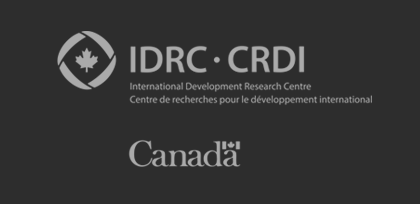OWSD NIGERIA NATIONAL CHAPTER PRESENTS Naturally-derived surfactants for healthy food formulation
November 08, 2022
OWSD Nigeria National Chapter University of PortHarcourt Branch Series of Scientific Communications: Millicent U. Ibezim-Ezeani on Naturally-derived surfactants for healthy food formulation
Naturally-derived surfactants for healthy food formulation
By
Millicent U. Ibezim-Ezeani
Department of Pure and Industrial Chemistry, University of Port Harcourt Nigeria
millicent.ibezam-ezeani@uniport.edu.ng
-
Introduction
With the exponential increase in human population worldwide, it is expected that global food demand will rise significantly and so the formulation of food that is compatible with the body system is necessary in order to achieve food security and improved nutrition for the benefit of mankind; as well as food preservation and storage while ensuring sufficiency of healthy food all round seasons of the year.
Food is an edible substance composed mainly of carbohydrates, proteins, fats, lipids, etc. which when consumed by living organisms provides the required nourishment for the sustenance of its existence. Thus, formulated foods are those food materials prepared with ingredients that boost the supplemental influence of minerals, vitamins, and condiments to the body system when ingested.
In addition to the nutrients gained from eating formulated foods, they furnish the body with nutraceutical benefits which in many cases support vascular function, maintain a healthy brain, enhance systemic circulation, rejuvenate body organs, promote muscular development, make up for dietary deficiencies, ensure the vitality and energized body system interactions, etc.
Food formulation, therefore, involves an assembled collection of microstructures of carbohydrates, proteins, fats, lipids, etc., stabilized with naturally-derived surfactants through the process of emulsification, dispersion, solubilization, gel and foam formations, etc.; which are specifically tailored to nutritional needs of humans and other organisms. Some examples of formulated foods are margarine, oat, baking and wheat flour, mayonnaise, desserts, bread, confectioneries, tinned corn, canned tomatoes, etc.
-
Naturally-derived surfactants
Naturally-derived surfactants (NDSs) designed for healthy food formulation are surface active-stabilizing molecules (of organic origin) with functionalized amphipathic efficacy at the surface or interface which are coherently free from artificial chemicals and certified by recognizable regulatory agencies. They acquire thermodynamic and kinetic stabilities through their preferential orientation at the surface or interface of colloidal systems; with the polar (hydrophilic, lipophobic, or oleophobic) head portion and non-polar (hydrophobic, lipophilic or oleophilic) tail portion (Figure 1) aligning towards aqueous and organic phases respectively.
Figure 1: Illustration of NDS molecule
NDSs are classified based on the capacity of their hydrophilic head groups to exercise influential attraction for ionic moieties in a colloidal fluid. The four major classes of NDSs (Figure 2) are the naturally-derived cationic surfactant (NDCS – carrying positively charged head group), naturally-derived anionic surfactant (NDAS – carrying negatively charged head group), naturally-derived nonionic surfactant (NDNS – carrying zero net charged head group) and naturally-derived zwitterionic surfactant (NDZS – carrying both positively and negatively charged head group).
Figure 2: Schematic representation of classes of NDSs
With the adsorption of NDSs, the interfacial (surface) tension and free energy of the system are reduced; thereby unifying the two immiscible aqueous and oily phases to form micelles (micellization). Micellization is a key behavior of all surfactants, and the concentration of NDSs above which micelles are formed is termed the critical micelle concentration (CMC). The measurements of surface or interfacial tension plotted as a function of surfactant concentrations are often applied in evaluating the CMC of NDSs. The concentration of surfactant which coincides with the breakoff point from the slopy-line plot depicts the CMC of that particular NDSs (Figure 3). An abrupt variation is observed in the surface tension, viscosity, and thermal and electrical conductivities of the system beyond CMC.
Figure 3: Plot of interfacial tension versus NDS concentration
The surfactant’s amphipathic structure, pressure, pH, temperature, concentration, etc. are the major factors which influence the CMC of a given surfactant. The driving force for the hydrophobic interaction and electrostatic repulsion between the hydrophilic groups are the main contending forces that influence the micellar shape (spherical, cylindrical, vesicles, lamellar, and reverse). This presentation, therefore, discusses the principles governing micelle formation, structure, and inter-micellar interactions as veritable parameters in the development of naturally-derived surfactants for healthy food formulation.
-
Utilization of naturally-derived surfactants
Structurally, the hydrophilic portion is made of glycerol, sorbitol, sucrose, propylene glycol, or polyglycerol; while the hydrophobic portion is composed of fatty acids derived from fats and oils. Most of these NDSs perform additional functions in their different applications; some commonly utilized NDSs and their amphipathic structures are presented in Table 1. For example, lecithin is a nontoxic NDS which in confectionery reduces viscosity, controls sugar solidification, improves the rheological properties of chocolate, helps in the homogeneous mixing, and can be used as a coating. In emulsions and fat spreads: it stabilizes emulsions, reduces spattering during frying, and improves the texture of spreads and flavor release. In doughs and bakery: it reduces fat and egg requirements, helps even distribution of ingredients in dough, stabilizes fermentation, increases volume, protects yeast cells in dough when frozen, and acts as a releasing agent to prevent sticking and make cleaning easier.
References
(1)Goyal, P. S. & Aswal, V. K. (2001). Micelle Structure and Inter-micellar Interactions in Micellar Solutions: Results of Small Angle Neutron Scattering Studies. Current Science, 80(8), 972.
(2)Ranasalva, N., Sunil, R., & Poovarasan, G. (2014). Importance of Biosurfactant in Food Industry. IOSR Journal of Agriculture and Veterinary Science, 7(5), 06-09.
- Schramm, L. L., Stasiuk, E. N. & Marangoni, D. G. (2003). Surfactants and their Application. Annual Report on the Progress of Chemistry, Section C, 99, 3-48.
- Sharma, R. K. (2014). Surfactants: Basics and Versatility in Food Industries. PharmaTutor, 2(3), 17-29.
- Sourav, D., Susanta, M., Aniruddha, G., Rumpa, S. & Bidyut, S. (2015). A review on natural surfactants. RSC Advances, 5, 65757.
Table 1: Some commonly utilized food surfactants and their amphipathic structures
|
Name |
Structure of surfactant |
Hydrophobic part with the name |
Hydrophilic part with the name |
|
|
1 |
Lecithins |
|
Heptadec-8-ene
Pentadecane |
|
|
2 |
Monoglycerides of fatty acids
and
Diglycerides of fatty acids |
|
Heptadecane |
Formic acid 2,3-dihydroxy-propyl ester
Formic acid 3-formyloxy-2-hydroxy-propyl ester |
|
3 |
Acetic acid esters of MDG |
|
Heptadecane |
Acetic acid 3-formyloxy-2-hydroxy-propyl ester |
|
4 |
Lactic acid esters of MDG |
|
Heptadecane |
2-[2-(3-Formyloxy-2-hydroxy-propoxycarbonyl)-ethoxy]-2-methyl-succinic acid |
|
5 |
Citric acid esters of MDG |
|
Heptadecane |
3-Carboxy-3-[2-(3-formyloxy-2-hydroxy-propoxycarbonyl)-ethoxy]-pentanedioic acid |
|
6 |
Mono- and diacetyl tartaric acid esters of MDG |
|
Heptadecane |
2,3-Diacetyl-5-oxo-hexanoic acid 3-formyloxy-2-hydroxy-propyl ester |
|
7 |
Propane-1,2-diol esters of fatty acids |
|
Heptadecane |
Formic acid 2-hydroxy-1-methyl-ethyl ester |
|
8 |
Sodium stearoyl-2-lactylate |
|
Hexadecane |
Sodium; 2-(2-acetoxy-propionyloxy)-propionate |
|
9 |
Calcium stearoyl-2-lactylate |
|
Hexadecane |
Calcium; 2-(2-acetoxy-propionyloxy)-propionate |











































